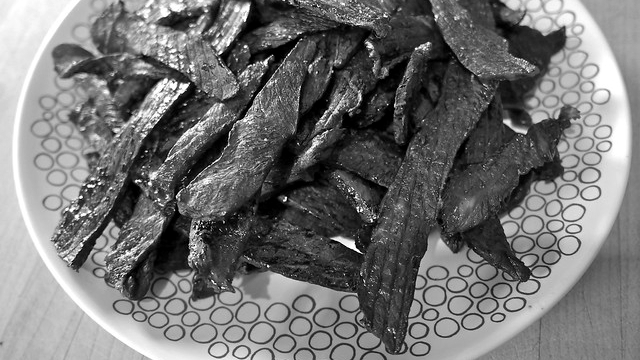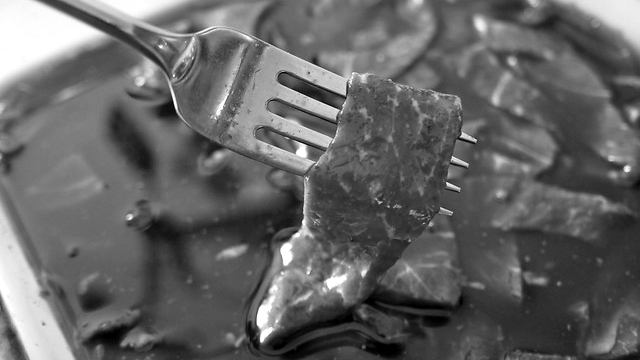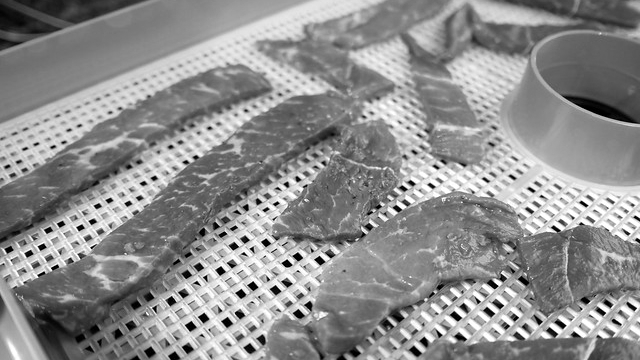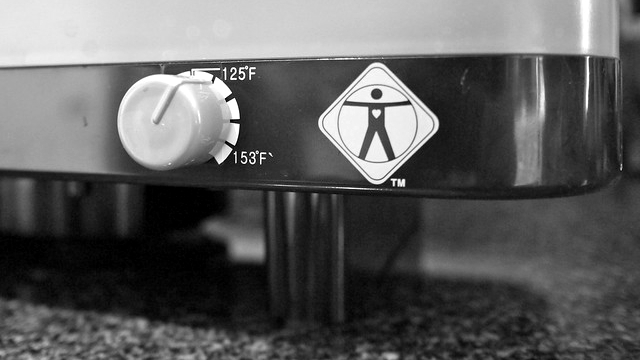Paleo-Friendly Jerky Recipe

I just made my first batch of Paleo beef jerky and the results are so good that I thought I'd share it with you. My entire house smells of beef jerky right now and it's driving my dog crazy - poor thing.
What's Paleo?
I'm not going to go into the details, but simply put it's a way of eating that best mimics the diets of our paleolithic hunter-gatherer ancestors - lean meats, seafood, vegetables, fruits, and nuts. If you're interested take a look here: The Paleo Diet.
I've been gradually getting more and more serious about eating a paleo diet as a lifestyle and wanted to see if I could find a recipe that I could use for making beef jerky that would be suitable = no soy sauce, besides other things. I was sent two really good examples of paleo jerky recipes from @paleoonabudget via Twitter (love how social tools connect us) and thought that they both sounded good enough to try. Here they are: Food Lover's Kitchen Beef Jerky, and Jen's Gone Paleo Really Tasty Beef Jerky.
My Version
Always one to tinker and hack with something, I adjusted and combined aspects from both recipes to come up with one that sounded good to me. Here's what I ended up with:
- Flank steak as lean as possible (grass-fed), trim any excess fat
- 1 cup raw coconut aminos (it's a substitute for soy sauce)
- 1 cup of organic apple juice (make sure there are no additives)
- 1 cup of pineapple juice (again, no additives)
- 1 tbsp fresh ground black pepper
- 1 tsp of paprika
- 1 tsp of garlic powder
- Lime juice (not in the marinade)

I used a nice cut of flank steak (personal preference) and made sure to trim off all excess fat, although there was hardly any. I put the steak in the freezer for an hour or two to make slicing it into thin strips a little easier.
Then I put all of the other ingredients (the marinade) into a Pyrex dish and added the sliced steak pieces, making sure that all of the steak was covered or submerged. I think I topped up with a little extra of both juices. I covered this and put it in the fridge overnight.
Dehydrating - Making it Jerky!
The next day (around noon) I removed the marinading steak from the fridge and let it drain through a small sieve for a minute or two to get the excess liquid off. No need to get my dehydrator into a big mess if I can easily avoid it. I used my old faithful L'Equip 528 6-tray Dehydrator. I love this machine!

I gave the entire batch of steak a heavy dose of freshly squeezed lime juice, all over. I was very heavy handed with the lime (thinking this would be my "secret sauce"). Then I arranged the pieces of steak onto the drying sheets (mine has six) making sure to leave a lot of room around each piece.

I set the temperature gauge to half way between 125F and 153F (~135F) and turned it on. At this point I went out to take care of some errands - nothing you would be interested in. When I got back a few hours later, I was greeted by the smell of beef jerky as I opened the front door - wow!
The jerky had been drying for about four hours while I was gone and much to my surprise was completely done. In fact it could have come out a little bit sooner to be even better, but that's my fault for going away and leaving it. When I make jerky using ground beef it takes a lot, lot, longer - more than twice as long.

The end result is absolutely delicious. The combination of the fruit juices, coconut aminos and spices gives the steak an amazing, slightly citrus flavor. I wish you could try some, it's soooo good!